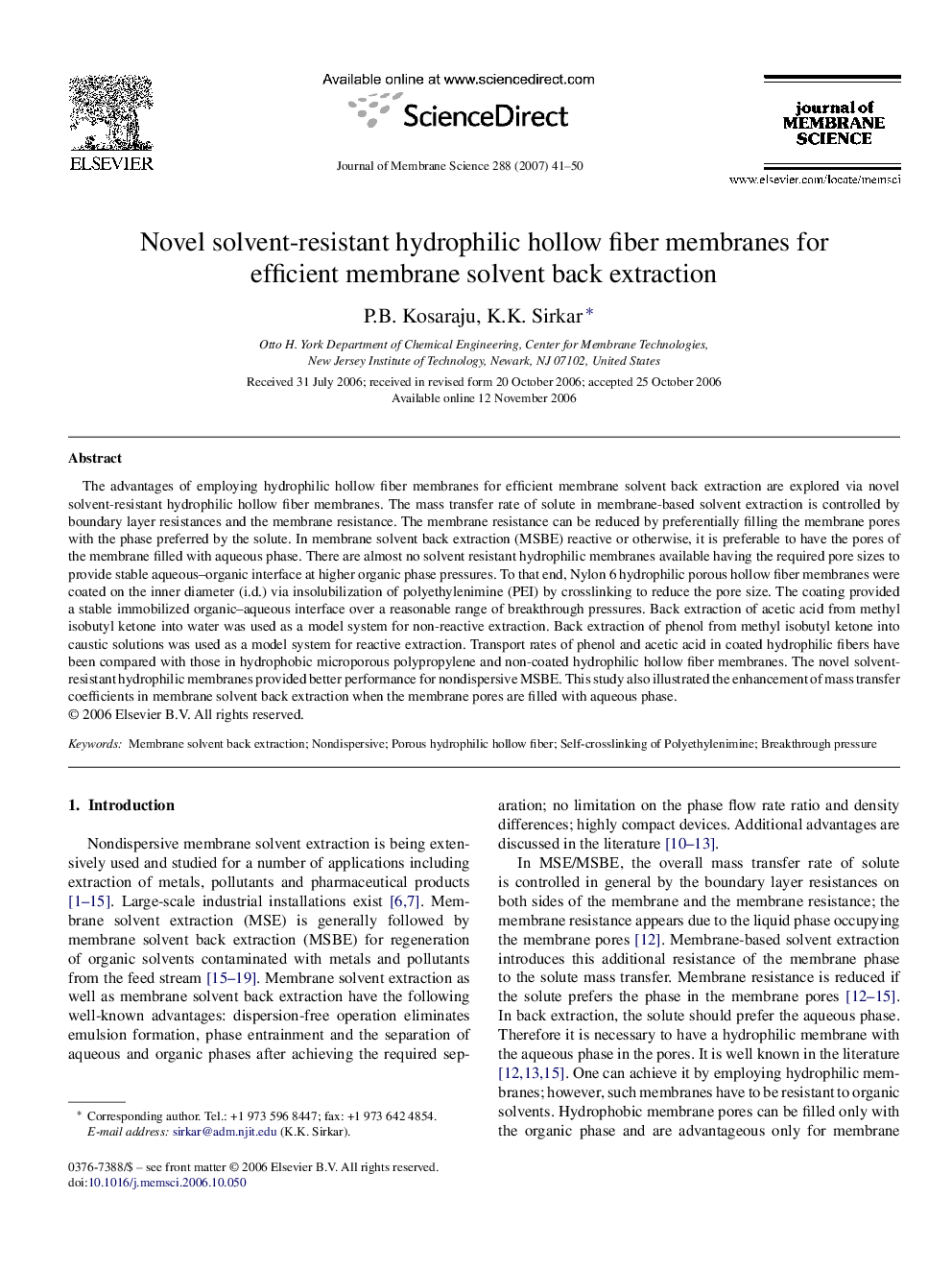| Article ID | Journal | Published Year | Pages | File Type |
|---|---|---|---|---|
| 638946 | Journal of Membrane Science | 2007 | 10 Pages |
The advantages of employing hydrophilic hollow fiber membranes for efficient membrane solvent back extraction are explored via novel solvent-resistant hydrophilic hollow fiber membranes. The mass transfer rate of solute in membrane-based solvent extraction is controlled by boundary layer resistances and the membrane resistance. The membrane resistance can be reduced by preferentially filling the membrane pores with the phase preferred by the solute. In membrane solvent back extraction (MSBE) reactive or otherwise, it is preferable to have the pores of the membrane filled with aqueous phase. There are almost no solvent resistant hydrophilic membranes available having the required pore sizes to provide stable aqueous–organic interface at higher organic phase pressures. To that end, Nylon 6 hydrophilic porous hollow fiber membranes were coated on the inner diameter (i.d.) via insolubilization of polyethylenimine (PEI) by crosslinking to reduce the pore size. The coating provided a stable immobilized organic–aqueous interface over a reasonable range of breakthrough pressures. Back extraction of acetic acid from methyl isobutyl ketone into water was used as a model system for non-reactive extraction. Back extraction of phenol from methyl isobutyl ketone into caustic solutions was used as a model system for reactive extraction. Transport rates of phenol and acetic acid in coated hydrophilic fibers have been compared with those in hydrophobic microporous polypropylene and non-coated hydrophilic hollow fiber membranes. The novel solvent-resistant hydrophilic membranes provided better performance for nondispersive MSBE. This study also illustrated the enhancement of mass transfer coefficients in membrane solvent back extraction when the membrane pores are filled with aqueous phase.
